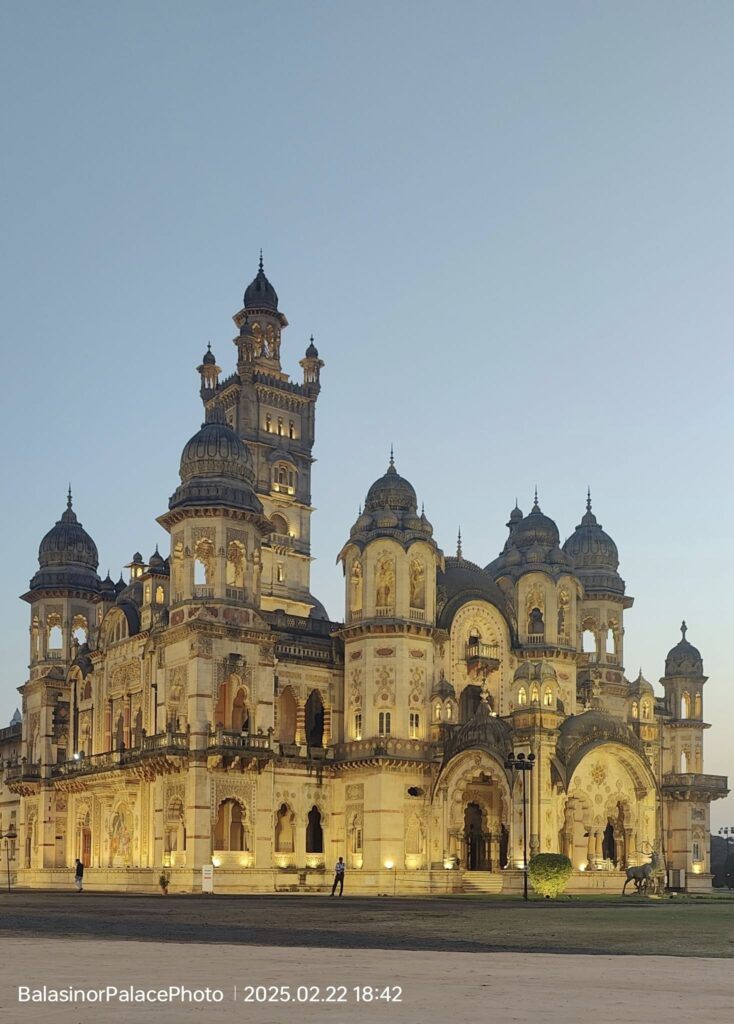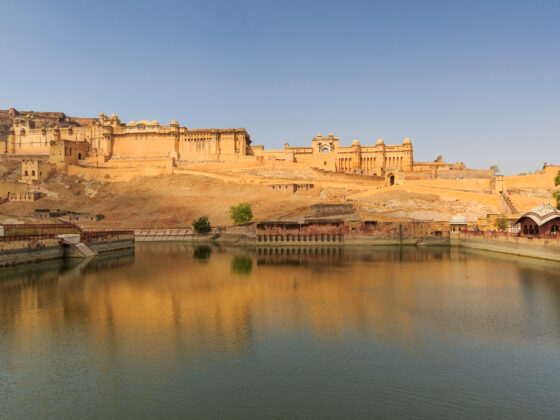The Majestic Lukshmi Vilas Palace, Baroda: A Royal Marvel

Introduction
Lukshmi Vilas Palace in Baroda (now Vadodara), Gujarat, stands as a stunning testament to India’s royal heritage. Built in the late 19th century, this magnificent palace remains one of the world’s largest private residences, four times the size of Buckingham Palace. Its fusion of Indo-Saracenic, Gothic, and Mughal styles captivates historians, tourists, and architecture enthusiasts.
This article explores the fascinating history, architectural brilliance, and cultural significance of Lukshmi Vilas Palace.
Historical Significance
Maharaja Sayajirao Gaekwad III commissioned Lukshmi Vilas Palace in 1890 as the royal residence of the Gaekwad dynasty. British architect Major Charles Mant designed it as a grand symbol of power, prestige, and progress. The construction cost, estimated at GBP 180,000, highlights the opulence behind its creation.
Maharaja Sayajirao Gaekwad III significantly contributed to education, infrastructure, and culture in Baroda. His patronage of the arts and commitment to modernization reflect in the palace’s grandeur and innovation.
Architectural Brilliance
Lukshmi Vilas Palace showcases Indo-Saracenic architecture, blending Indian, Islamic, and European elements. The grand facade features intricate carvings, domes, and elaborate arches. Inside, breathtaking artwork, stained glass windows, and opulent chandeliers enhance its beauty.
Key Architectural Features:
- Darbar Hall: The grand Darbar Hall has Venetian mosaic flooring, stained glass windows from Belgium, and ornate ceilings. It was designed for royal ceremonies and cultural performances.
- European Influence: The interiors display European styles, including Renaissance, Baroque, and Rococo elements.
- Intricate Sculptures & Frescoes: Beautiful sculptures, frescoes, and murals adorn the palace, reflecting Indian mythology and Western artistic traditions.
- Expansive Grounds: The palace stands within a sprawling 500-acre estate featuring a golf course, gardens, and fountains.
- Towering Domes & Arches: Inspired by Mughal and Rajput designs, domes and scalloped arches enhance the palace’s aesthetic appeal.
The Royal Legacy
Lukshmi Vilas Palace remains home to the Gaekwad royal family, making it one of India’s few occupied palaces. While certain areas remain private, visitors can explore designated sections, offering insight into royal life.
The Gaekwads played a crucial role in Vadodara’s cultural and economic growth. Maharaja Sayajirao Gaekwad III’s contributions to education and social reforms live on through institutions like Maharaja Sayajirao University.
Tourist Attractions & Visitor Experience
Today, Lukshmi Vilas Palace attracts visitors from across India and beyond. Guided tours provide insights into its history, architecture, and artistic legacy.
Key Attractions:
- Palace Museum: The museum houses artifacts, paintings, and royal memorabilia, offering an immersive experience of Baroda’s regal past.
- Golf Course: The 10-hole golf course was originally designed for the royal family and remains a major highlight.
- Music & Cultural Events: The palace occasionally hosts concerts and cultural festivals, bringing its grandeur to life.
- Maharaja Fateh Singh Museum: Located within the palace grounds, the museum displays European and Indian art, including works by Raja Ravi Varma.
Preservation & Heritage Conservation
Despite its age, Lukshmi Vilas Palace remains well-maintained. Conservation efforts ensure its structural integrity and artistic brilliance for future generations.
Several organizations and heritage conservation groups recognize the palace as a cultural treasure, emphasizing the importance of preserving India’s royal legacy.
Conclusion
Lukshmi Vilas Palace is more than an architectural marvel. It symbolizes Baroda’s royal splendor, cultural richness, and historical grandeur. Whether you love architecture, history, or travel, this palace offers an unforgettable experience.
As you walk through its majestic halls and gardens, its grandeur serves as a timeless reminder of India’s regal past. This iconic landmark continues to inspire awe and admiration.







